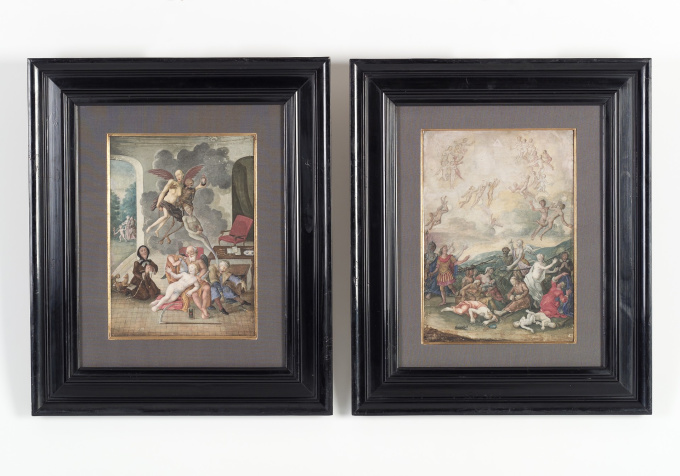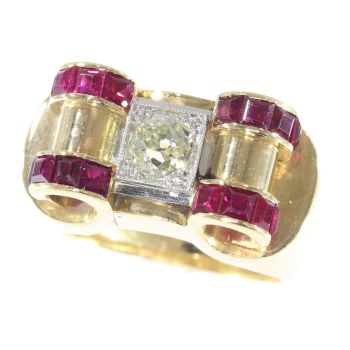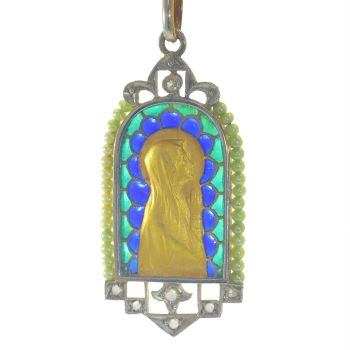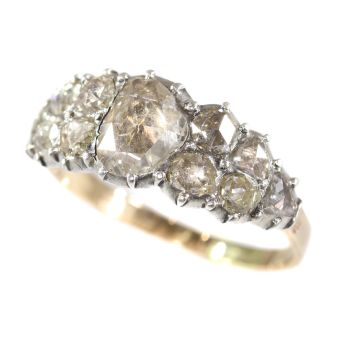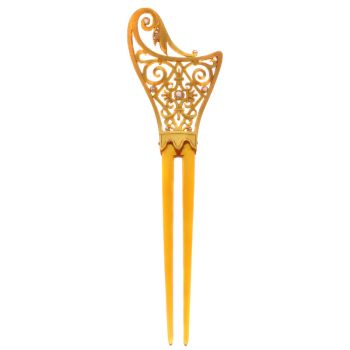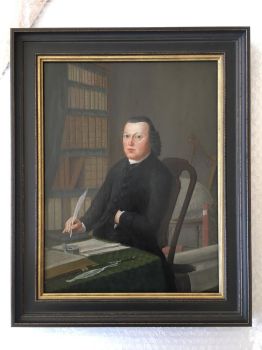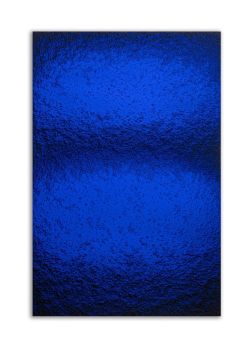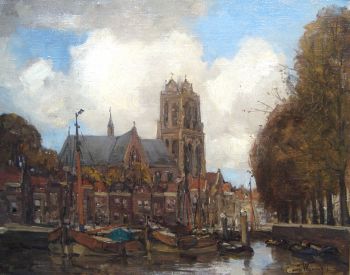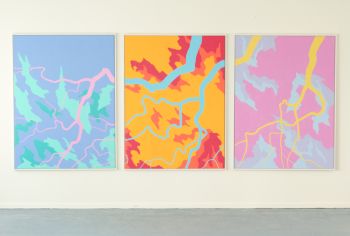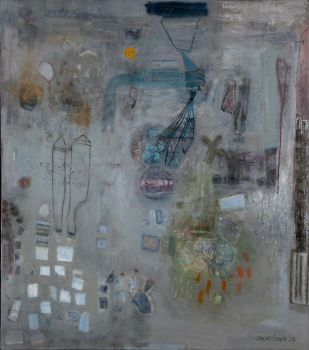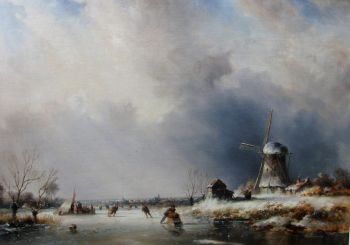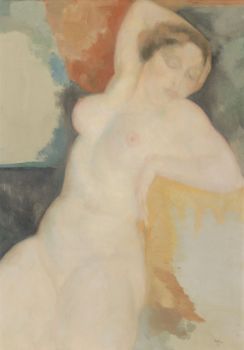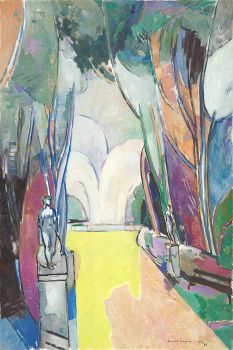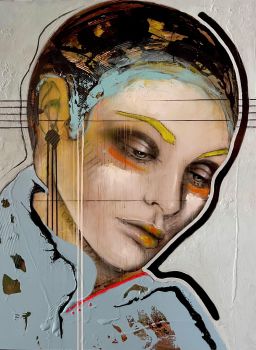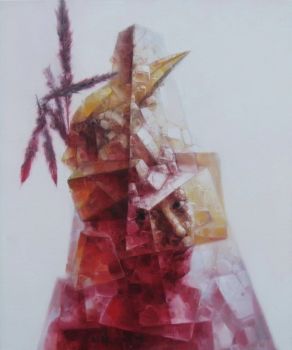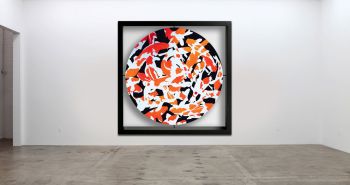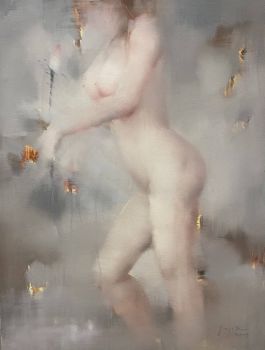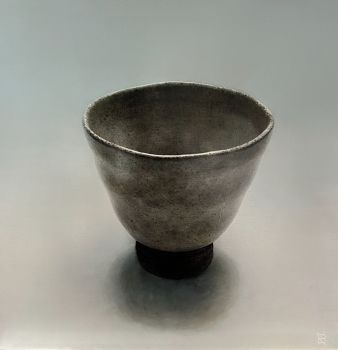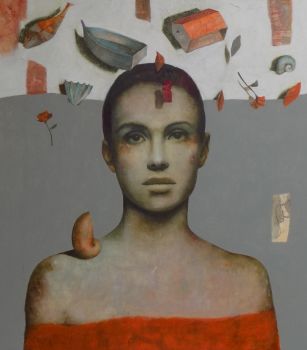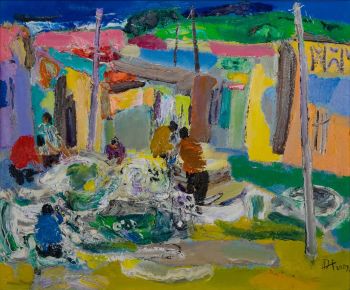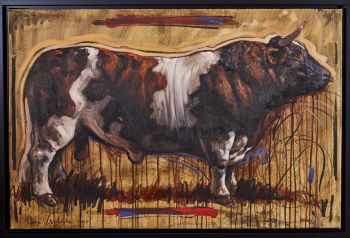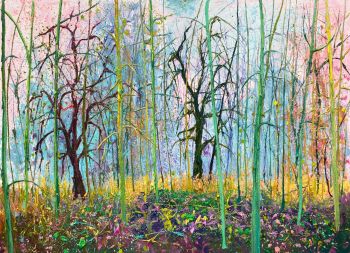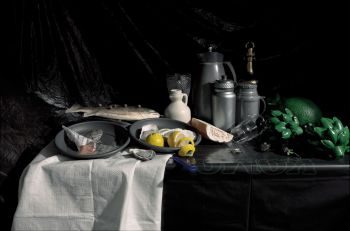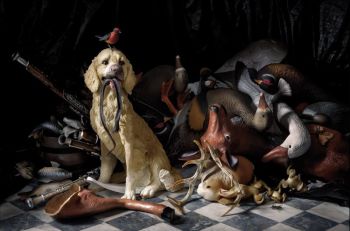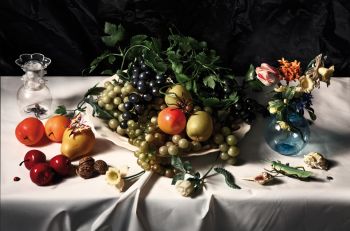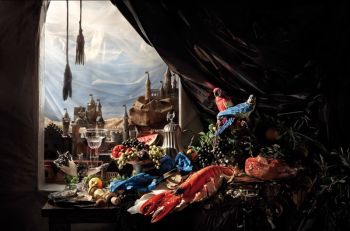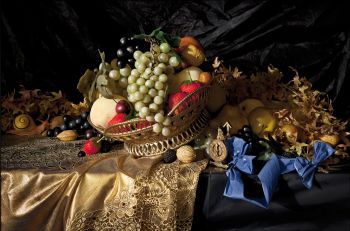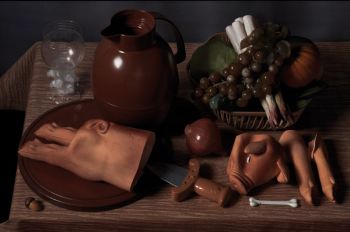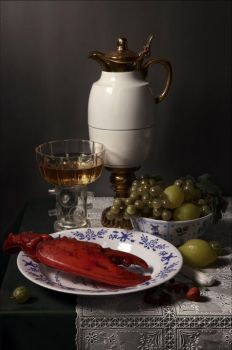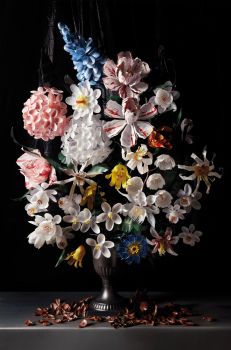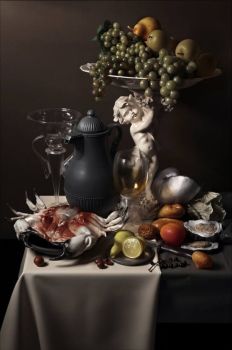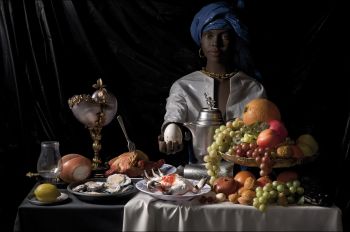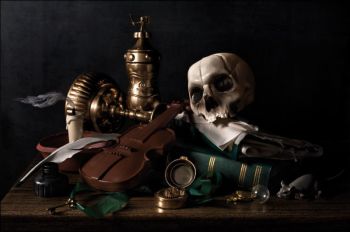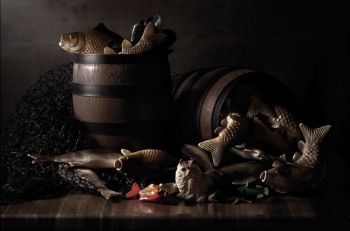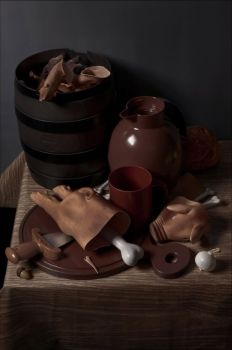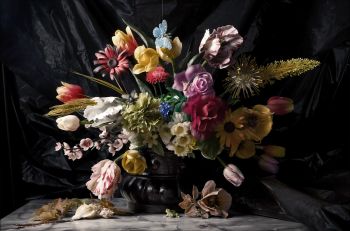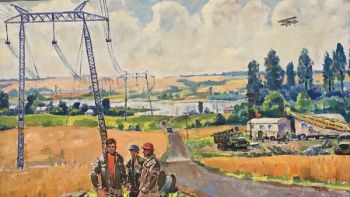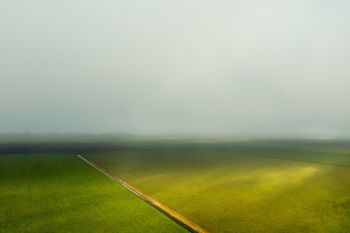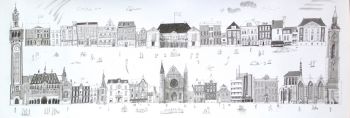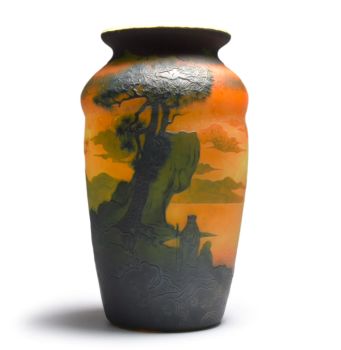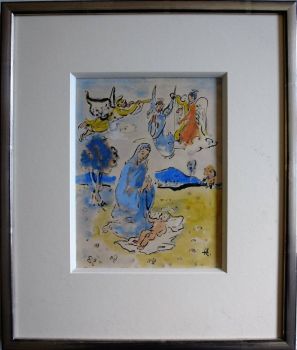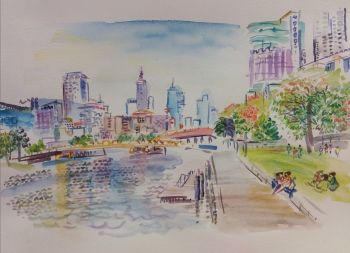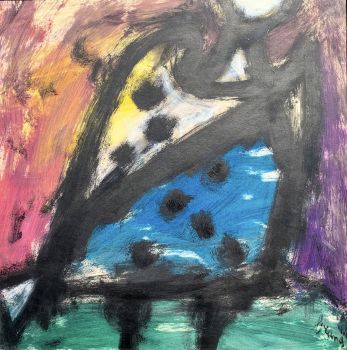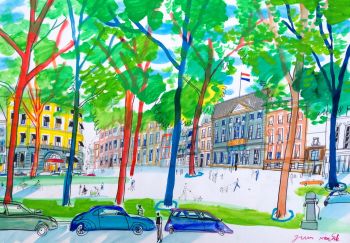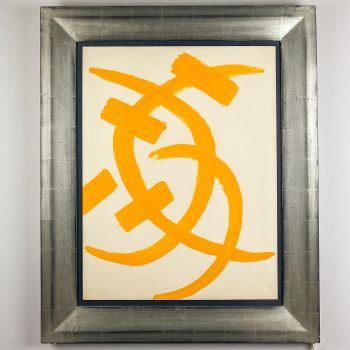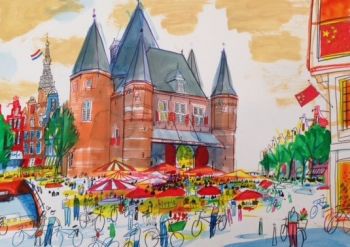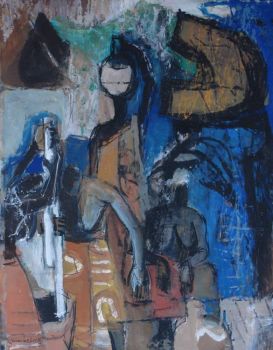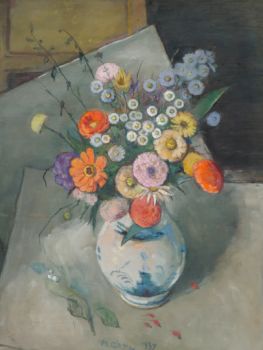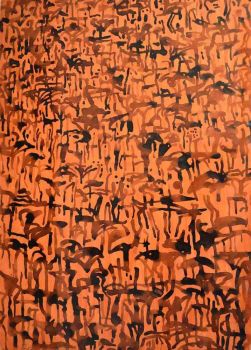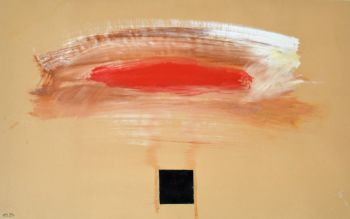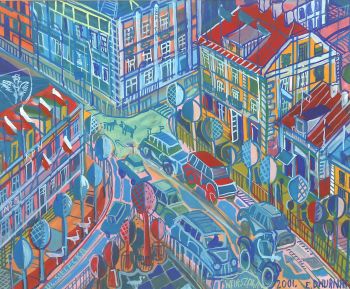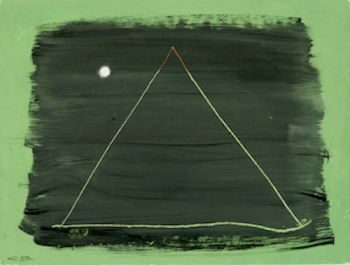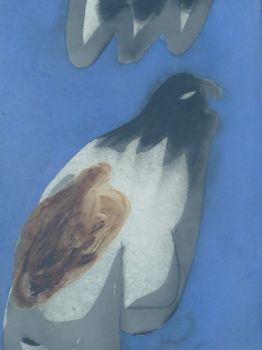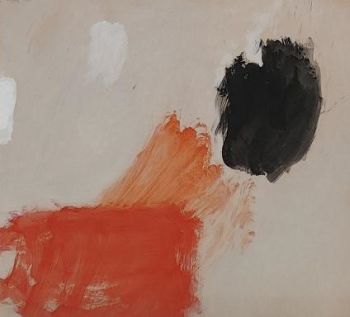Two German Gouache Paintings 1720 - 1730
Artista Sconosciuto
GuazzoCartaAcquerelloDipingere
50 ⨯ 42 cm
Attualmente non disponibile tramite Gallerease
- A proposito di opere d'arteTwo pictures with a rare Vanitas scene.
Father Time accompanied by Death.
In a chair in the foreground sits a winged Father Time clipping th wings of Life. In front of Time we see an hourglass and a scythe. These are both attributes of Time as is the pair of scissors with which the wings of life are pinioned.
On Time’s right hand we see a man leaned to a stool with a bandage round his head whom’s spirit is escaping through his mouth. Death is literally dragging of the spirit by its hair. Between the legs of the man we see an opened moneybag. On the left of Father Time a kneeling and lamenting woman accompanied by a monkey and a dog that reads a book.
Hovering over this scene we see Death that drags of an old woman with a pearl necklace and a portrait medallion, together with te soul of the dying man.
On the right a table with an inkwell, papers and a written text. On the left in the landscape outside a pair accompanied by a winged boy with a torch.
This unusual representation was almost certainly meant to commemorate the human mortality. Father Time with his many attributes and the grinning Death speak for themselves. The dog usually stands for faithfulness and the monkey for lasciviousness. Here it is can reasonably be assumed that the stand for the human arrogations of foolishness and vanity because they are depicted as impersonations of human beings. The text on the table might refer to the account of the deceased’s life.
The Trapnet of Death
This representiation is undoubtedly an allusion of the Last Judgement, although the separation of souls is depicted in a unique style.
Death, with his head and scythe decorated with flowers, seduces people to stay on his side of the trapnet. Behind him stands a winged figure that beckons the people towards the light.
Before the net in the foreground we see money pouches, gems and a man wearing a crown, all symbols of power and the richess of the world. Possibly the flowers that Death is adorned with refer to the transience of life and swift decay.
The absence of explicitly Christian symbols is striking in both the representations. Only the winged person in the second picture could be conceived as an angel. Traditionally however, it is God himself who in depictions of the Final Judgement seperates the sheep from the goats, surrounded by the Archangels and Apostles. Here we see none of these symbolizations.
Gouache: a technique with water soluble paint and gum arabic. The difference with watercolor is that the result is heavier and much more opaque . - A proposito di opere artista
Può succedere che un artista o un creatore sia sconosciuto.
Alcune opere non sono determinate da chi sono state realizzate o sono state realizzate da (un gruppo di) artigiani. Esempi sono statue dell'antichità, mobili, specchi o firme non chiare o leggibili ma anche alcune opere non sono affatto firmate.
Inoltre puoi trovare la seguente descrizione:
•"Attribuito a …." A loro avviso probabilmente opera dell'artista, almeno in parte
•“Studio di ….” o “Officina di” A loro avviso un'opera eseguita nello studio o nella bottega dell'artista, eventualmente sotto la sua supervisione
•“Cerchio di…” A loro avviso un'opera del periodo dell'artista che mostra la sua influenza, strettamente legata all'artista ma non necessariamente al suo allievo
•"Stile di..." o "Seguace di..." A loro avviso un'opera eseguita nello stile dell'artista ma non necessariamente da un allievo; può essere contemporaneo o quasi contemporaneo
•“Modalità di…” A loro avviso un'opera nello stile dell'artista ma di epoca successiva
•"Dopo …." A loro avviso una copia (di qualsiasi data) di un'opera dell'artista
•“Firmato…”, “Datato…” o “Iscritto” A loro avviso l'opera è stata firmata/datata/inscritta dall'artista. L'aggiunta di un punto interrogativo indica un elemento di dubbio
•"Con firma....", "Con data...", "Con iscrizione..." o “Riporta firma/data/iscrizione” a loro avviso la firma/data/iscrizione è stata aggiunta da qualcuno diverso dall'artista
Related artworks
Artista Sconosciuto
A rare Japanese export lacquer medical instrument box1650 - 1700
Prezzo su richiestaZebregs & Röell - Fine Art - Antiques
Artista Sconosciuto
Gobelet vénitien ailé1624 - 1626
Prezzo su richiestaPeter Korf de Gidts - Antiquairs
1 - 4 / 12Dutch School
Arrivo di un uomo delle Indie orientali olandesi a Table Bay18th century
Prezzo su richiestaZebregs & Röell - Fine Art - Antiques
1 - 4 / 24- 1 - 4 / 24
- 1 - 4 / 24

